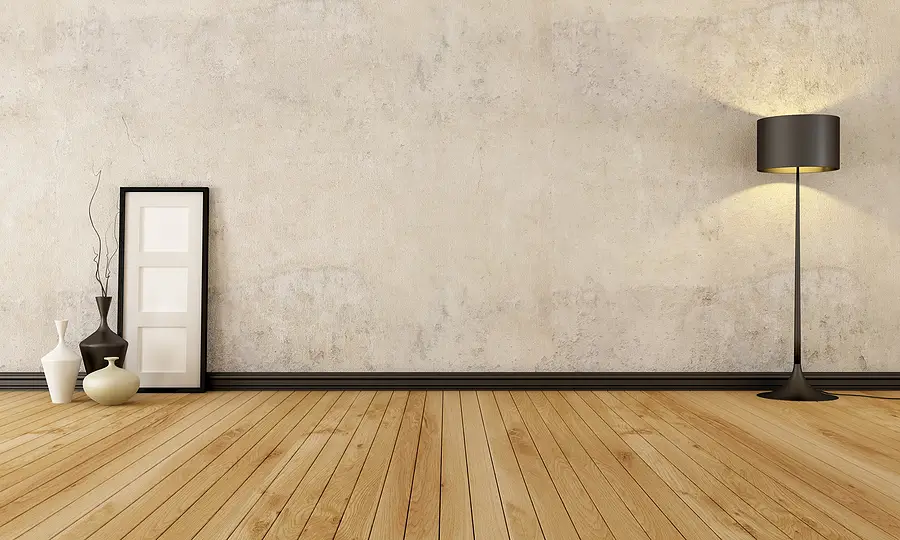Have you ever found yourself second-guessing whether a scuff on the floor or faded paint qualifies as normal wear and tear? This is a common dilemma that can create friction between landlords and tenants when the security deposit is involved.
Many landlords struggle to differentiate between what’s considered normal wear and actual property damage. Misunderstandings can arise without clear guidelines, leaving you and your tenants frustrated.
But here's the good news: understanding the difference isn’t as complicated as it seems. With the right knowledge and preparation, you can handle these situations confidently and fairly, protecting your rental unit and your relationship with tenants.
In this blog, we are defining normal wear and tear, how to document your property’s condition, and when deductions from the security deposit are justified.
Decoding Ordinary Wear and Tear for Pleasanton Landlords
When renting out a property, it’s normal to see some wear on the home after a tenant has lived there for a while. This is what we call ordinary wear and tear. It includes the gradual, unavoidable deterioration of the property that happens due to regular, everyday use. Even with responsible tenants, no matter how careful they are, these are things that no one can avoid.
A. Examples of Ordinary Wear and Tear
Ordinary wear and tear refers to changes in the property that occur over time and are considered a part of its normal usage. These changes happen naturally, even when tenants take good care of the rental. Some examples include:
1. Faded Paint or Wallpaper
Walls are exposed to sunlight and everyday activities, causing paint to fade or wallpaper to peel over time. This is a natural result of aging materials, not tenant misuse.
Note: A room exposed to direct sunlight may fade faster than a shaded one.
2. Worn Flooring
Floors are designed to be walked on; natural wear is inevitable after months or years of use. There are different types of normal wear and tear for floors depending on the type of flooring you install in your rental property:
Wood Floors: Light scuff marks from foot traffic, small dents, or dulling of the finish.
Carpet: Flattening or wear patterns in high-traffic areas like hallways or living rooms.
Tile or Vinyl: Minor surface scratches from everyday use.
3. Loose or Discolored Grout Between Tiles
Grout is a material that breaks down with moisture and repeated scrubbing, making this a predictable issue. Regular cleaning, water exposure, and age can cause grout to loosen, crack, or discolor over time.
4. Minor Dents or Nail Holes in Walls
Tenants often hang pictures, clocks, or artwork, leaving small holes behind when they move out. This is an expected result of tenants personalizing their living space, especially when they use standard nails or picture hooks.
5. Worn-Out Fixtures
These are mechanical parts or surfaces that naturally wear out with daily handling. For instance, doorknobs, handles, and hinges may become loose or squeaky over time from repeated use. Also, light fixtures in your rental property can accumulate dust. Meanwhile, its plastic and metal parts are prone to fading and light scratches.
6. Faded or Discolored Window Coverings
Window coverings like blinds or curtains are exposed to UV rays daily. This prolonged exposure to sunlight can cause them to fade or have their materials degraded over time.
7. Appliance Wear
Appliances are used daily, and cosmetic changes from regular operation don’t indicate misuse. Examples of these are refrigerators, stoves, and dishwashers. Slightly dulled finishes, light scratches on glass oven doors, or minor dents from regular usage constitute normal wear.
8. Worn Bathroom Fixtures
Bathrooms are high-use areas, and minor cosmetic changes are inevitable, even with regular cleaning. Common wear and tear can be seen from:
Taps and Showerheads: Minor water stains, mineral buildup, or loose handles over time.
Bathtubs and Sinks: Light scratches or dulling of the enamel.
9. Worn or Stuck Doors and Windows
Wooden doors or windows can swell or stick slightly due to weather changes and humidity. Over time, hinges or tracks might also loosen. These are common issues caused by environmental factors and normal use, not tenant negligence.
10. Faded Countertops or Cabinets
Kitchen counters and cabinets may show signs of wear, like light scratches or faded finishes, from daily food prep and storage. This is a result of everyday use over time, not intentional damage.
Pro Tip: These examples all have one thing in common: they’re the natural outcome of living in a space. Landlords should expect these changes and factor them into their property maintenance budget.
B. Clear Lease Agreements and Handling Security Deposits the Right Way
One of the smartest things you can do as a landlord is lay everything out clearly in your lease agreement. Spell out what’s expected of tenants regarding routine maintenance and property care. This could include basic things like changing air conditioning filters, replacing light bulbs, or letting you know about repairs before they become big issues.
Setting these expectations upfront reduces the chances of disputes when a tenant moves out. And if disagreements do arise, a well-drafted lease can be your best defense. Having a free rental analysis can also help you draft a solid lease agreement.
Meanwhile, when it comes time to settle the security deposit, being fair is essential. Mishandling deductions can lead to disputes, tenant dissatisfaction, or even legal trouble.
What Landlords Can Charge For
A security deposit is not a catch-all fund—it’s reserved for specific circumstances where the tenant has failed to meet their responsibilities under the lease agreement. This covers:
Repair Cost for Excessive Damage
Cleaning Fees
Unpaid Rent
Conducting Thorough Inspections
One of the best ways to handle tenant security deposit disputes is to prevent them altogether by having clear evidence of the property’s condition through move-in, move-out, and routine inspections. Be specific in your notes and securely save all photos, videos, and inspection checklists to ensure a complete record.
Providing an Itemized Statement
If you make any deductions from the security deposit, you must provide the tenant with an itemized statement outlining the charges. Here’s what this statement should include:
A Detailed Breakdown: List each deduction separately, including the reason for the charge and the cost.
Supporting Evidence: Attach copies of receipts or invoices for the services performed. Include photos of the damages that justify the charges.
Refund Timeline: Most state laws, including California’s, require landlords to return the remaining deposit (or the full deposit if no deductions are made) within 21 days of the tenant moving out.
Avoiding “He Said, She Said” Situations
Insufficient documentation often leads to misunderstandings between landlords and tenants. To avoid disputes, it’s better to keep all communication in writing. Ensure you also share the move-in inspection checklist to maintain transparency between you and the tenants.
Reduce Wear and Tear with Regular Property Inspections!
Whether you’re new to being a landlord or have been doing it for years, understanding what ordinary wear and tear means is key to maintaining your investment and keeping tenant relationships smooth. When in doubt, it’s always worth partnering with property management professionals who know the ins and outs of the business.
At Advantage Property Management Services, we make it our mission to help landlords manage the complexities of property management, especially when it comes to handling normal wear and tear, such as:
Tenant Screening: Select tenants who will treat your property with care.
Routine Maintenance: Keep your property in top condition to prevent small issues from turning into costly repairs.
Move-In and Move-Out Inspections: Document the property’s condition and protect your investment.
Security Deposit Management: Ensure deductions for wear and tear or tenant damages are handled professionally and legally.
Free Rental Pricing Analysis: Optimize your rental income with expert market insights.
Dispute Resolution: Avoid headaches by letting us handle tenant disagreements over excessive property damage or deposits.
Don’t let the details of property management weigh you down! Sign up for a FREE Rental Analysis with us and let us help you handle your Pleasanton rental property with fairness, transparency, and proper documentation.
Related Articles
What Do Landlords Mean by "Leaving A Property in Move-in Good Condition"?
Understanding AB 2801: Key Changes to California Security Deposit Laws






